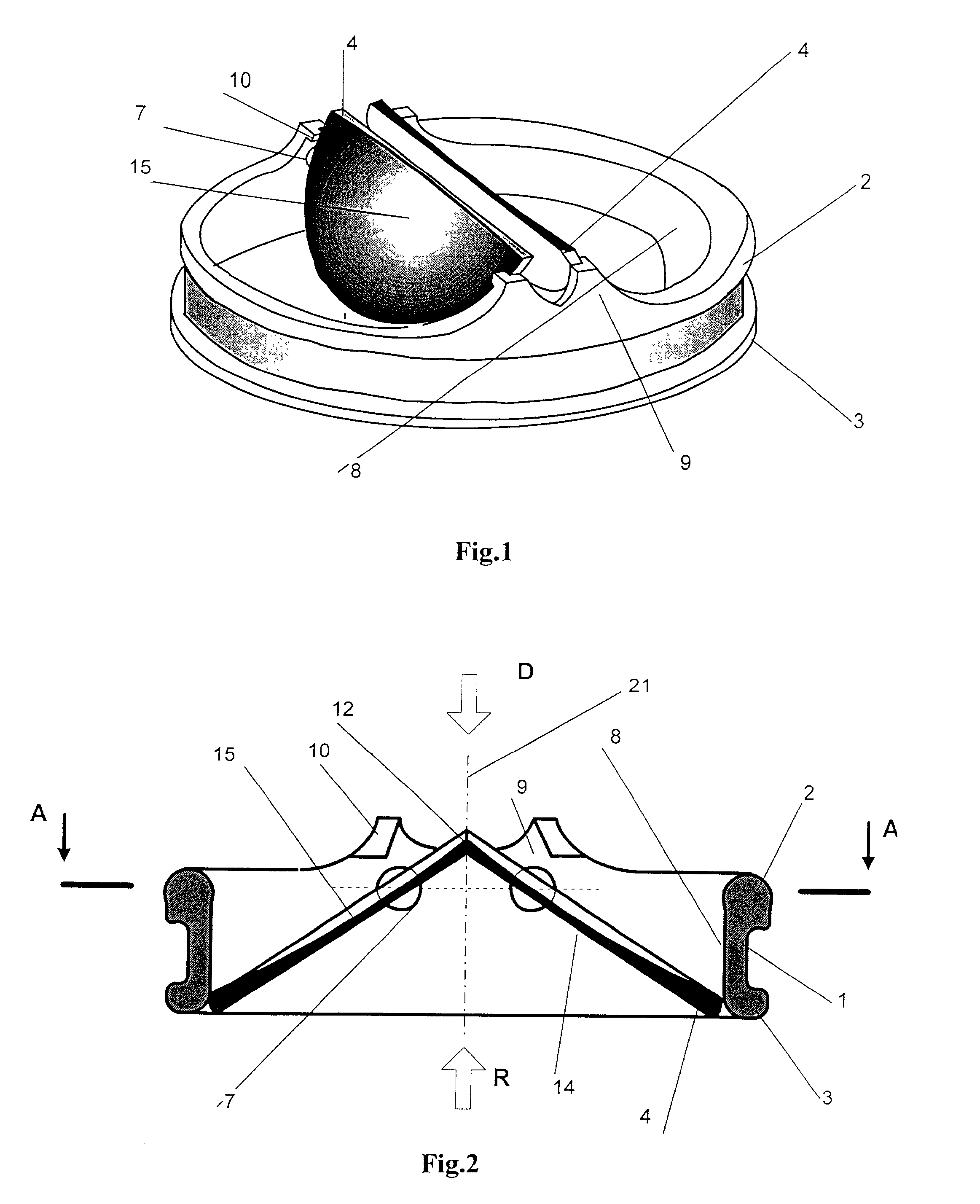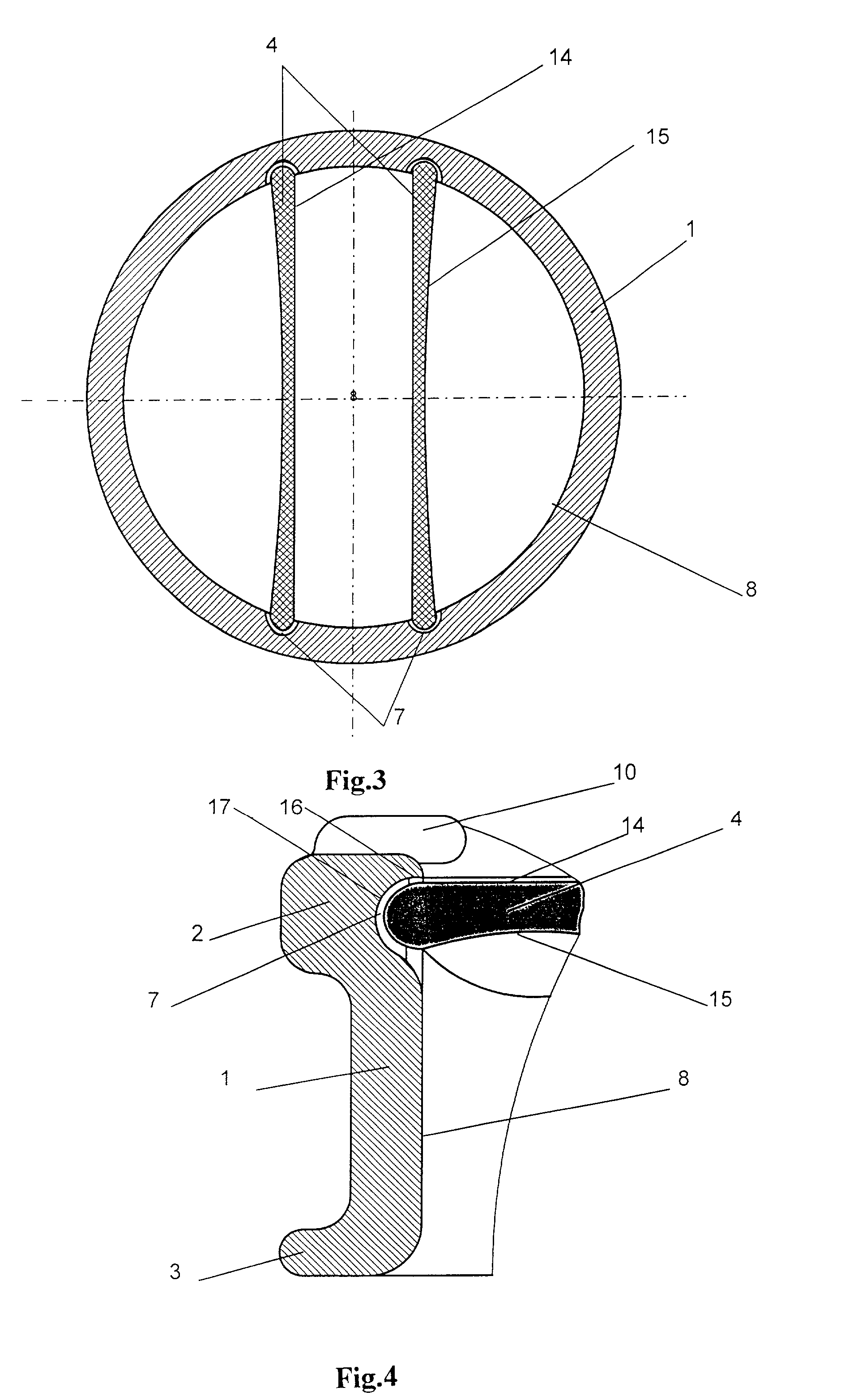Heart valve prosthesis
a heart valve and prosthesis technology, applied in the field of heart valve prosthesis, can solve the problems of hyperemic zones, inability to fully wash the lateral surfaces using both forward and reverse, and inability to achieve the effect of fully washing the lateral surfaces,
- Summary
- Abstract
- Description
- Claims
- Application Information
AI Technical Summary
Problems solved by technology
Method used
Image
Examples
Embodiment Construction
[0026] A heart valve prosthesis comprises an annular body 1 with a pair of flanges 2, 3, and a closing element in the form of two flaps 4 or three flaps 5, which are mounted through bearings 6 in recesses 7 of the body 1 with freedom to be rotated. In the embodiment with two flaps the interior surface 8 of the body 1 about the entire periphery is cylindrical with no protrusions, that is the flow section of the annular body 1 has a form of a circle and is not varied at different levels (FIG. 1). Body 1 has a constant height on a greater portion of a ring circle, and ledges 9, the number of ledges being equal to that of the flaps. Ledges 9 are provided with rotation limiters of the flaps 4 or 5. In the preferable embodiment, the ledges 9 are W-shaped and their interior surface from the side of the direct flow of blood is inclined towards the central axis of the body 1.
[0027] The flaps 4 and 5 have ascending and descending surfaces oriented towards a direct and a reverse flow of blood,...
PUM
 Login to View More
Login to View More Abstract
Description
Claims
Application Information
 Login to View More
Login to View More - R&D
- Intellectual Property
- Life Sciences
- Materials
- Tech Scout
- Unparalleled Data Quality
- Higher Quality Content
- 60% Fewer Hallucinations
Browse by: Latest US Patents, China's latest patents, Technical Efficacy Thesaurus, Application Domain, Technology Topic, Popular Technical Reports.
© 2025 PatSnap. All rights reserved.Legal|Privacy policy|Modern Slavery Act Transparency Statement|Sitemap|About US| Contact US: help@patsnap.com



